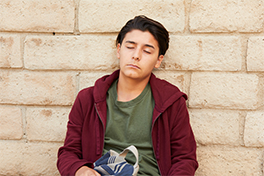Sleep Paralysis
Sleep paralysis is the inability to move or speak for a short time when you’re falling asleep or waking up. This can be a frightening or disturbing experience.
During sleep paralysis, you can experience:
- Eye fluttering
- Moaning
- Limb numbness or tingling
- Rapid or strong heartbeat
- Sweating
- Sensation of struggling to move
- Chest pressure
- Difficulty breathing
Episodes usually last seconds to minutes and can end by themselves or from being touched, shaken, or spoken to, or after trying hard to move.
Sleep paralysis in children and adolescents
Sleep paralysis can be hard to confirm in pediatric patients, as they may have difficulty describing it. Accompanied by hypnagogic or hypnopompic hallucinations, sleep paralysis can be scary for a child.
